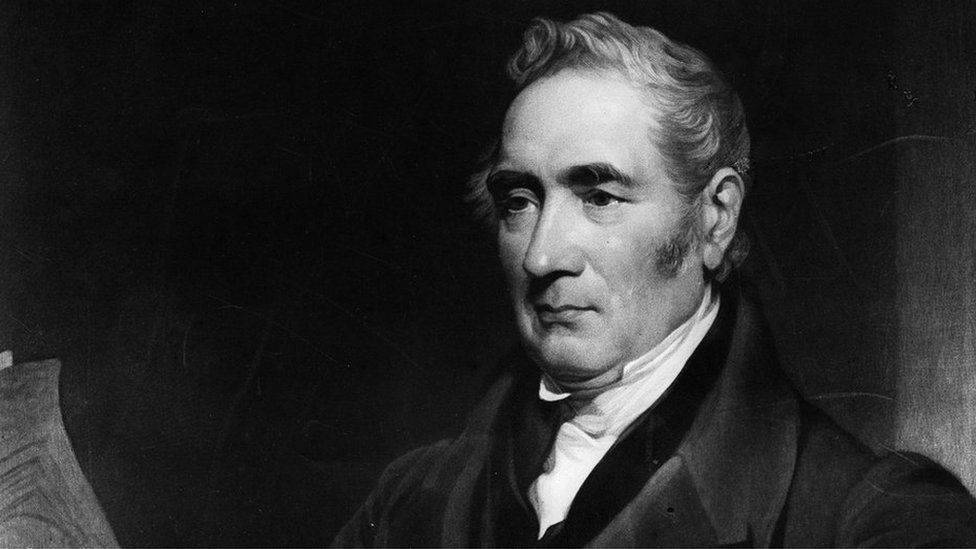Plaque unveiled for 'Father of Railways' George Stephenson
- Published

Engineer and inventor George Stephenson, regarded as the Father of Railways, has been honoured with a plaque 167 years after his death.
Stephenson lived in Leicestershire while he planned the Leicester and Swannington Railway.
The plaque for Stephenson, who died in Derbyshire, was unveiled at Alton Grange, Ravenstone, where he lived from 1832 to 1838.
He played a "major role" in local industry, the county council said.
The railway Stephenson argued for, and invested in, carried coal from the western coal fields around Snibston Colliery into Leicester.
It is estimated that, thanks to the improved supply of coal, the city saved about £40,000 per year, approximately £3.4m today.
Mr Lewis said: "George Stephenson played a major role in establishing the industrial and innovative heritage of our county, including introducing new mining methods and safety measures that made Snibston one of the most efficient and successful collieries of its time."
The green plaque is part of a council scheme which has also honoured Ladybird Books and Monty Python's Graham Chapman.
Stephenson was nominated by Chris Pratt who now lives at Alton Grange.
He described the figure as one of "Britain's most influential engineers" and was delighted he was being recognised.
In 1829, he and his son Robert designed the Rocket locomotive, which hit a top speed of 29mph (46km/h).
In 2011, George Stephenson was honoured with a blue plaque at Chesterfield railway station, Derbyshire.
He died in the town in 1848 and is buried at the Holy Trinity Church.
- Published11 October 2011
- Published29 July 2015
- Published10 December 2014